- Infra & Utility
Contact us
In the dynamic world of infrastructure and utilities, the use of drones offers unprecedented advantages and opportunities. From inspecting railways, roads, and waterways to transmission towers, drones are playing an increasingly significant role in enhancing the safety, efficiency, and sustainability of management and maintenance.
In the infrastructure and utilities sector, there is a constant need for innovative ways to inspect and maintain critical structures and networks more safely, efficiently, and cost-effectively. Traditional inspection methods, such as on-site visual inspections, are often time-consuming, expensive, and carry safety risks. Drones provide a revolutionary solution for this. They enable the rapid and safe inspection of hard-to-reach locations, saving time, money, and risks.
Drones are a valuable tool for asset management
Safety
Drones significantly enhance safety. They enable remote inspections of hard-to-reach or hazardous locations, such as railway lines, roads, bridges, and waterways. As a result, employees no longer need to enter dangerous areas or work at great heights, which reduces the risk of accidents. Additionally, drones can conduct inspections more quickly and frequently, allowing potential issues to be identified earlier and incidents to be prevented. Furthermore, drones can be safely deployed on operational infrastructure, which greatly increases the safety of inspectors and significantly reduces costs.
Data-driven
Data-driven solutions from drones play a crucial role in modern industry. By equipping drones with advanced sensors and cameras, companies can collect detailed and real-time data in hard-to-reach or hazardous locations. This data provides valuable insights, from structural analyses to thermal images that signal potential defects or inefficiencies. Thanks to data-driven technology, companies can make faster and more proactive decisions, which enhances both safety and operational efficiency..
In sectors such as energy, infrastructure, and industry, drones enable the early identification of risks and the prediction of maintenance needs. This not only saves costs but also prevents dangerous situations and disruptions resulting from the work. Furthermore, the integration with artificial intelligence allows for automated analyses and predictive maintenance, further optimising performance. In short, data-driven solutions represent an essential step towards smart, efficient, and safe operations across various sectors.
Cost saving
The use of drones in infrastructure and utilities offers significant cost savings, particularly in the inspection and maintenance of critical structures such as bridges, high-voltage lines, railways, and waterways. Traditional inspections often require expensive equipment, such as helicopters, cherry pickers, or climbing gear, as well as teams of technicians who need to be on-site. This not only incurs high costs but also presents logistical challenges. Drones can carry out these inspections quickly and cost-effectively, without the need for heavy infrastructure or labour-intensive preparations.
Daarnaast verminderen drones de noodzaak voor frequente stilleggingen van infrastructuren. Met drones kan men sneller en efficiënter data verzamelen, waardoor inspecties binnen enkele uren zijn afgerond, in plaats van dagen. Bovendien stellen drones bedrijven in staat om onderhoud preventief te plannen op basis van nauwkeurige en actuele gegevens. Hierdoor worden kostbare, ongeplande reparaties verminderd.
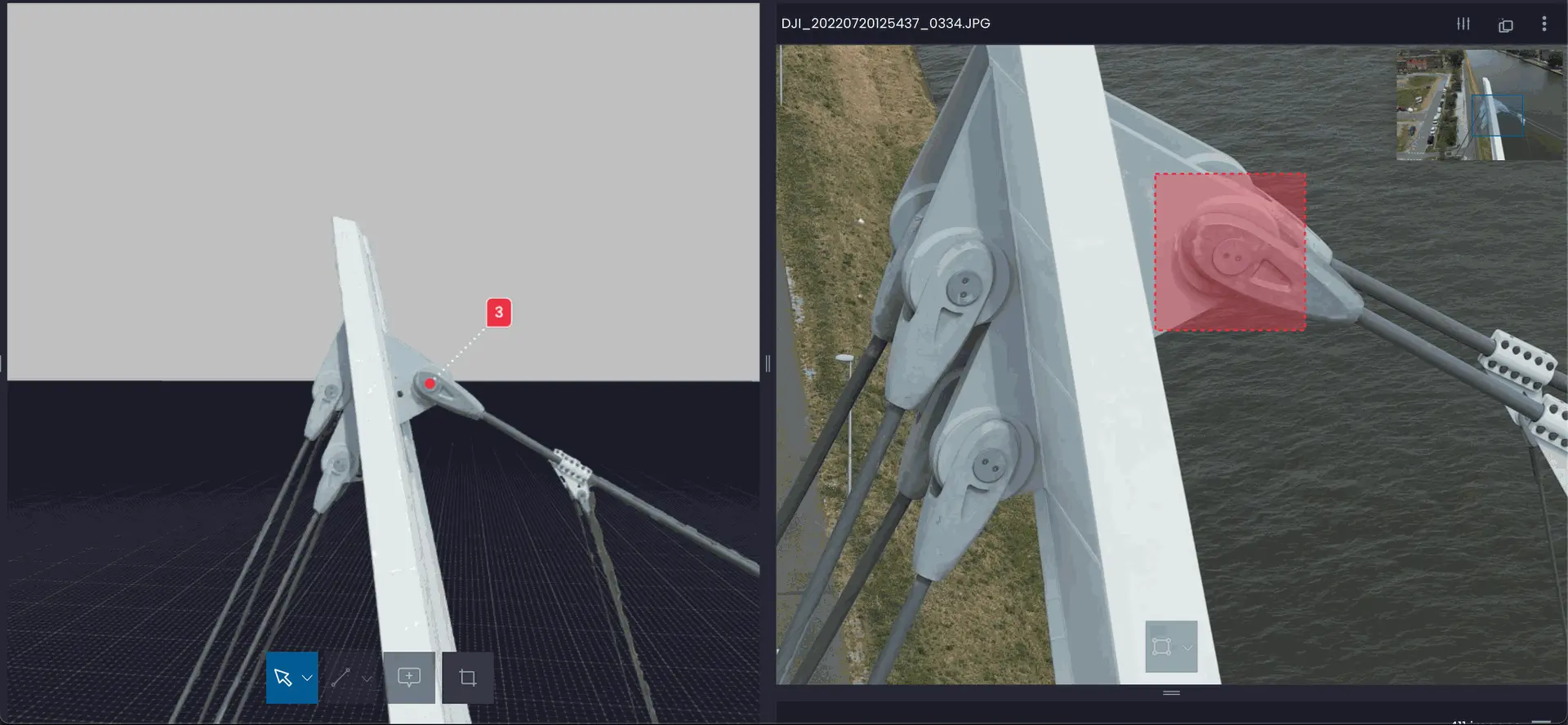
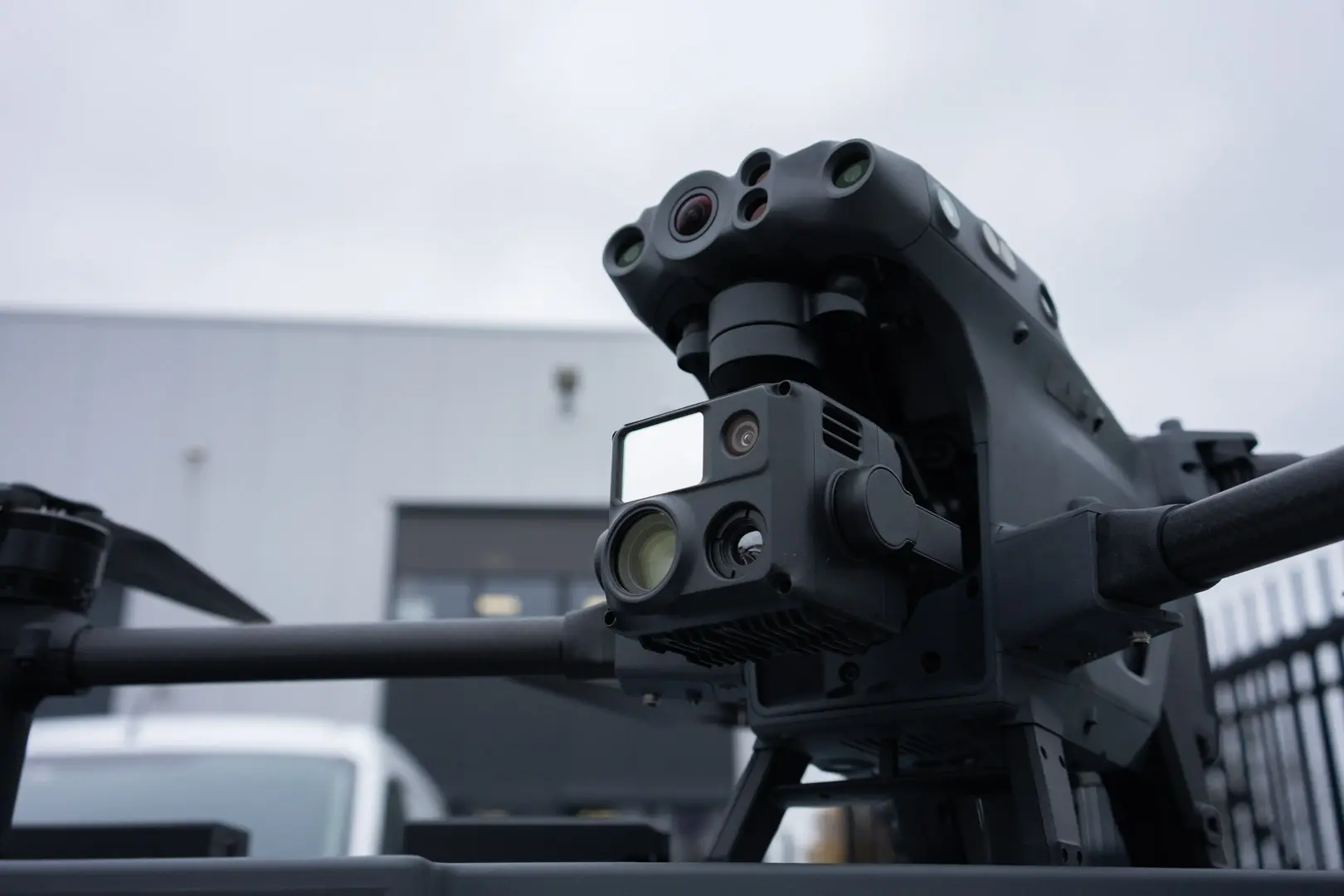
Applications
Inspection of railways and roads
The continuous monitoring of the condition of railway lines and roads is crucial for the safety and flow of transport. Traditionally, inspections require manual checks that take time and resources, such as service interruptions, whereas drones can significantly accelerate these processes. Drones can capture high-resolution images of railway lines and roads and are equipped with advanced sensors to detect and measure structural anomalies, cracks, or subsidence. This allows problems to be identified and rectified in a timely manner, reducing the likelihood of accidents and lowering maintenance costs.
Management of waterways and coastlines
Waterways and coastlines play a crucial role in our infrastructure, but are often difficult to access and susceptible to erosion and other damage. Drones can assist in monitoring waterways by mapping currents, sedimentation, and erosion patterns. This aids in planning maintenance and protective measures. Furthermore, drones can quickly respond to emergencies such as flooding and subsidence, allowing for immediate recovery efforts to be planned and executed..
Inspection of bridges and overpasses
Inspecting bridges and overpasses is essential for safety, but it can be dangerous and time-consuming. Drones can capture high-resolution images of hard-to-reach parts of bridges, such as substructures and pillars, without exposing inspectors to the hazards of working in difficult-to-access locations. With advanced sensors, drones can also detect signs of wear, such as cracks and corrosion, at an early stage, which helps to reduce maintenance costs.
Inspection of transmission towers
Transmission masts are often difficult to access and are located in remote areas. Drones provide an efficient and safe solution for inspecting the condition of telecom towers and antennas. This eliminates the need for technicians to climb high towers and minimises the risks. Furthermore, drones can capture thermal images, allowing damaged or poorly functioning components to be quickly identified. This ensures that telecom networks continue to operate without interruption and that faults can be resolved swiftly.
Water management and sewer inspections
Maintaining water pipes, sewer networks, and water supply systems can be complex and labour-intensive, especially in hard-to-reach places. Drones offer a solution by providing a detailed overview of these infrastructures with special sensors and cameras. They can detect blockages, leaks, and other issues at an early stage, allowing maintenance teams to intervene quickly. This prevents serious problems such as flooding or pipe breaks, making the maintenance of water infrastructures more efficient and cost-effective..
3D modelling
With drones, complex structures can be captured quickly and safely, without disturbing the environment. Digital twins provide insight into the condition of infrastructures, allowing for better planning and execution of maintenance. This leads to lower costs, increased safety, and more efficient operations. At Vortex Hardware and Maintenance BV, we help customers gain control over their infrastructure management using drones and 3D models.
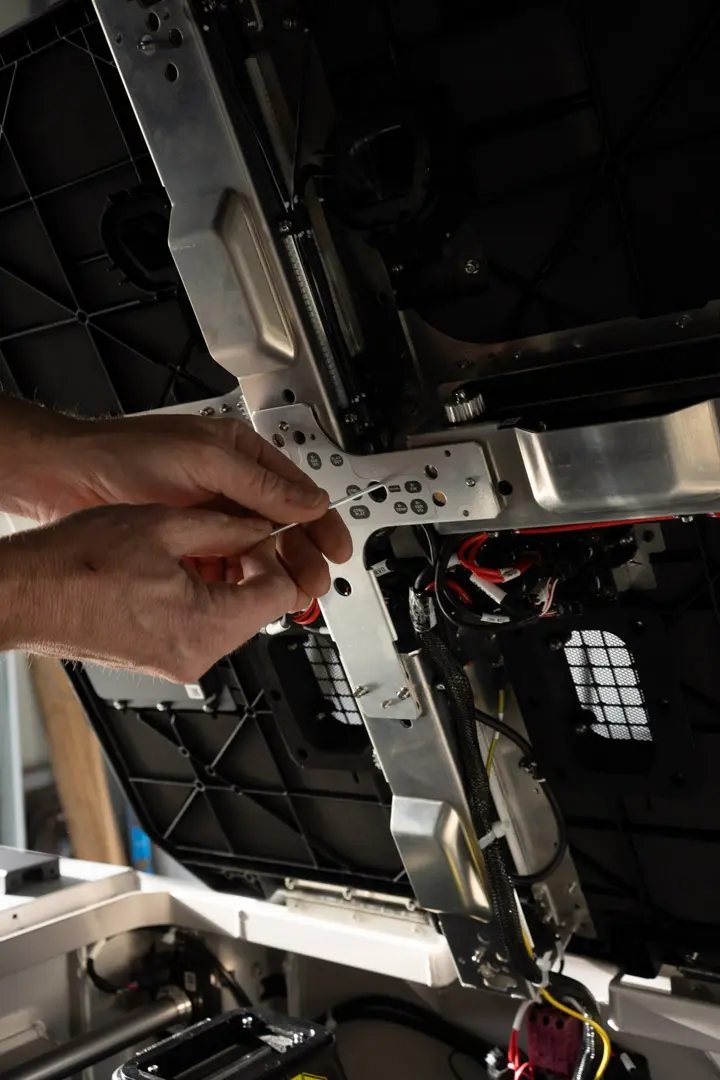
Maintenance
To ensure safety, maintenance is essential. We provide maintenance for your hardware and software and offer NEN3140 inspections.
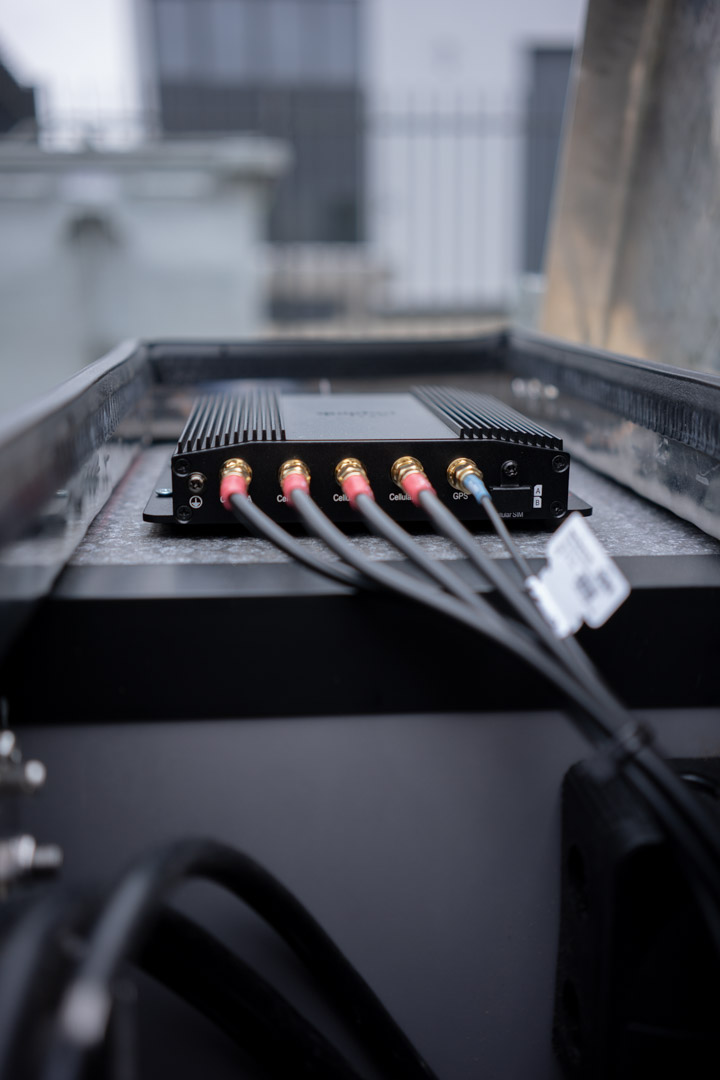
Integration
Implementing new technologies is complex. We provide customised solutions to find and integrate the right solution within your field..
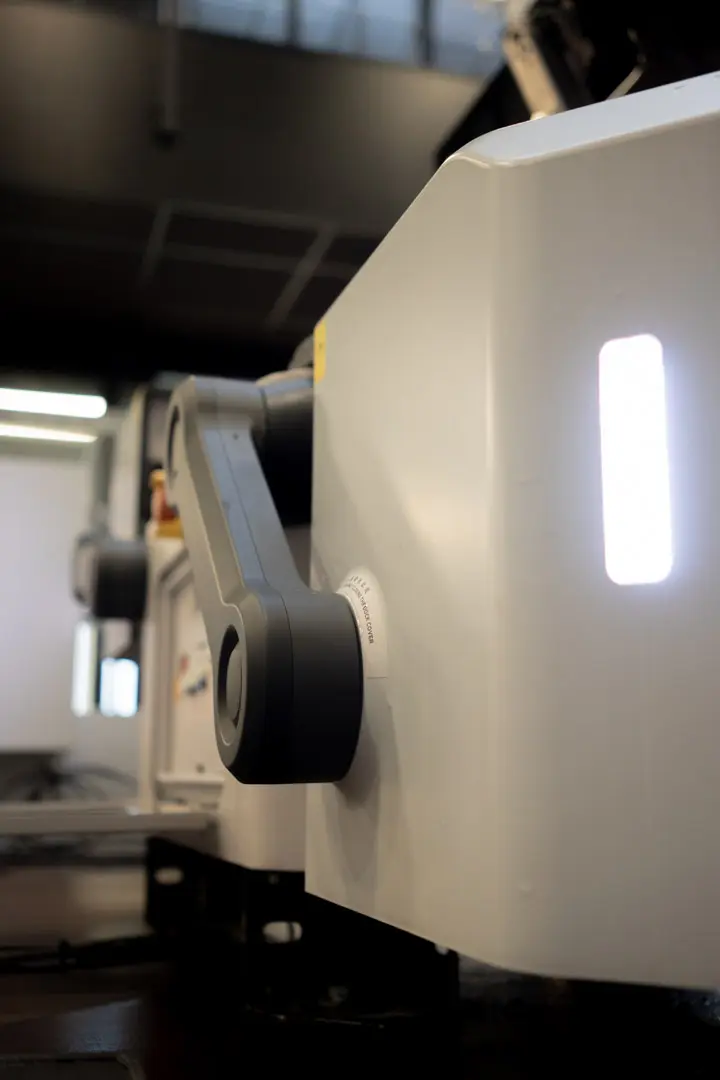
Sales
The right hardware and software are essential for the safe execution of your operations. Our extensive range offers a wide variety of applications.
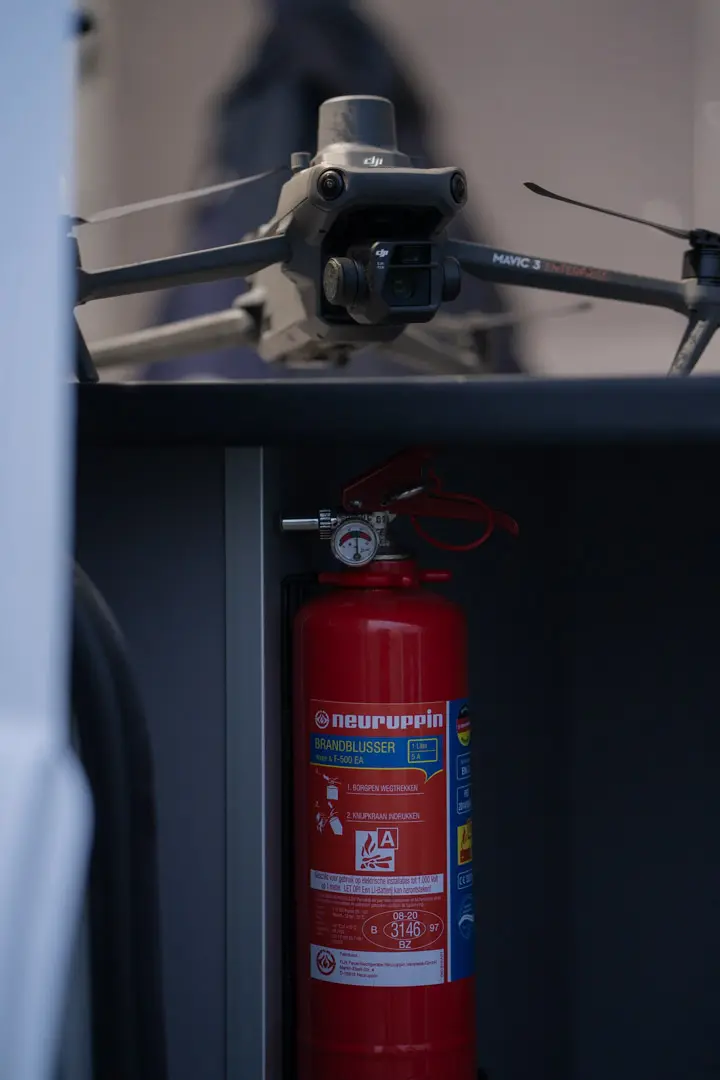
Rental
We offer rental options to temporarily support your fleet or project with hardware and software. This way, you avoid unnecessary costs and remain operational.